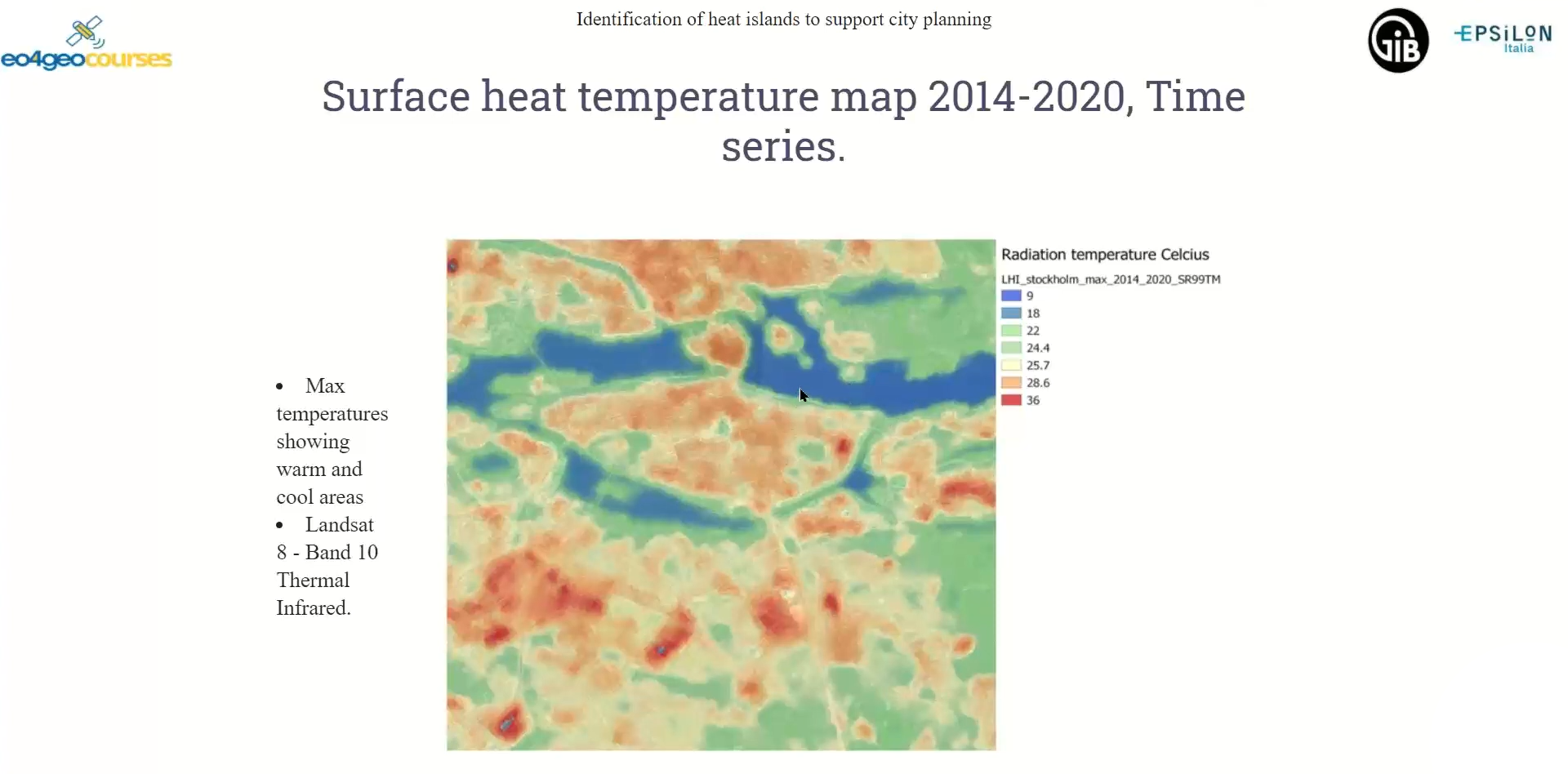Urban Heat Islands
EO Capability Benefits
Urban Heat Island (UHI) mapping is a crucial tool for understanding and addressing the phenomenon of higher temperatures in urban areas compared to their rural surroundings. UHI datasets help policy makers and urban planners identify hotspots where residents are exposed to high temperatures. This can inform decisions on where interventions such as urban greening campaigns, reflective surfaces, or cooling shelters, should be prioritised.
EO Capability Description
The urban heat island (UHI) effect is a phenomenon where urban areas experience significantly higher temperatures compared to their surrounding rural areas. This temperature difference can be between 1°C and 7°C or more. The causes are related to a range of factors, including buildings and paved surfaces retaining more heat than natural landscapes, dark surfaces such as asphalt absorbing more solar radiation to anthropogenic emissions from vehicles and air conditioning and the wind blocking properties of urban geometry.
There are multiple remote sensing-based methodologies for deriving indications of where UHI effects are greatest. Surface Urban Heat Island Intensity (SUHII) uses Land Surface Temperature data in combination with Built-Up Extent to establish the non-linear correlation between the degree of imperviousness and the measured LST. This provides a relative indication of intensity. Obtaining canopy urban heat island intensity (CUHII) requires more complex workflows. Studies have, for instance, combined a variety of data sources including thermal imagery from Landsat-8, Digital Elevation Model, Land Use Land Cover, Percent Imperviousness, various vegetation indices, ground-based meteorological observation data and anthropogenic heat flux data to train a model in predicting CUHII. The recent and planned launches of commercial high-resolution thermal sensors are set to greatly improve our ability to investigate UHI with much more granularity than previously possible.



